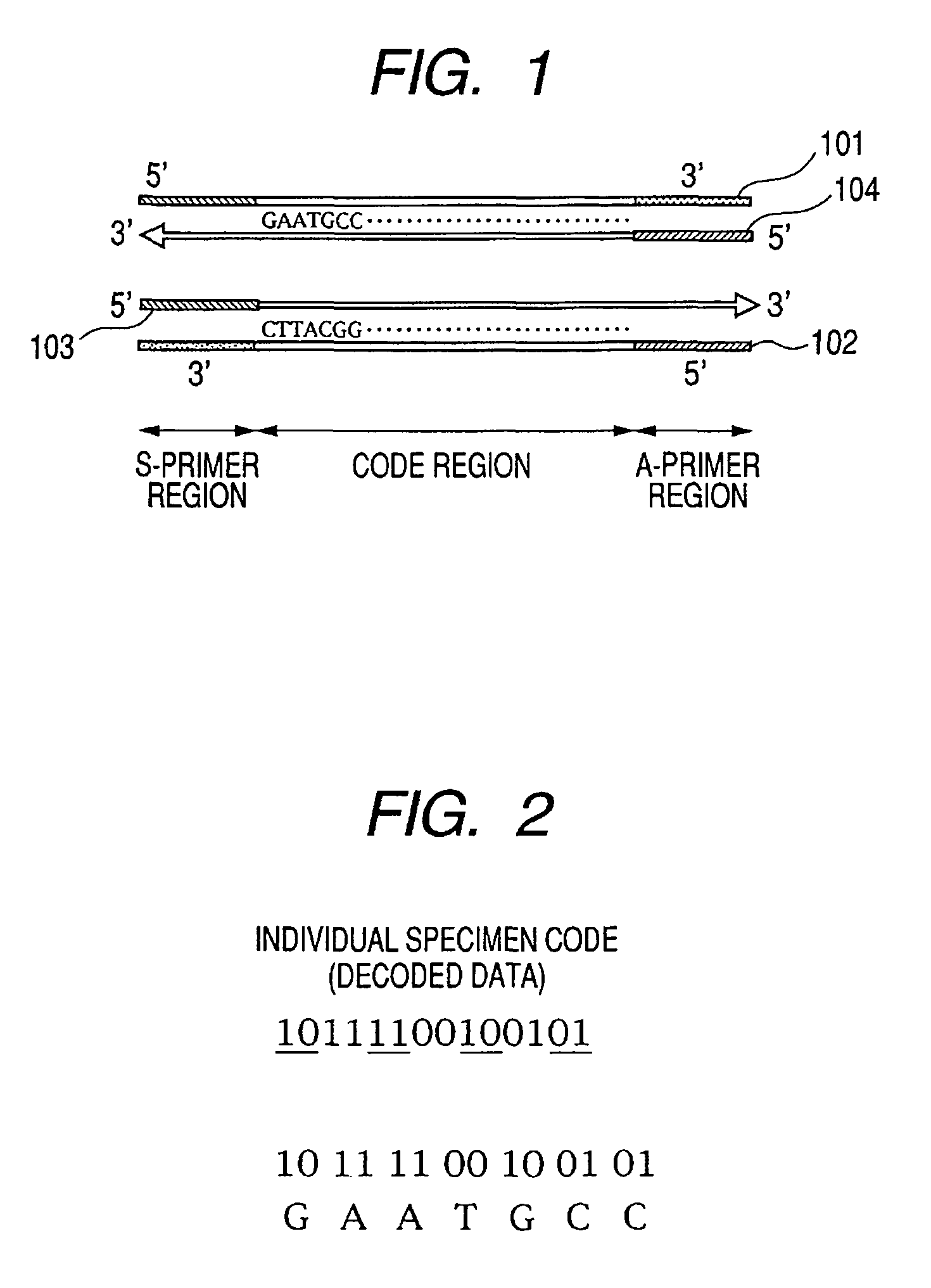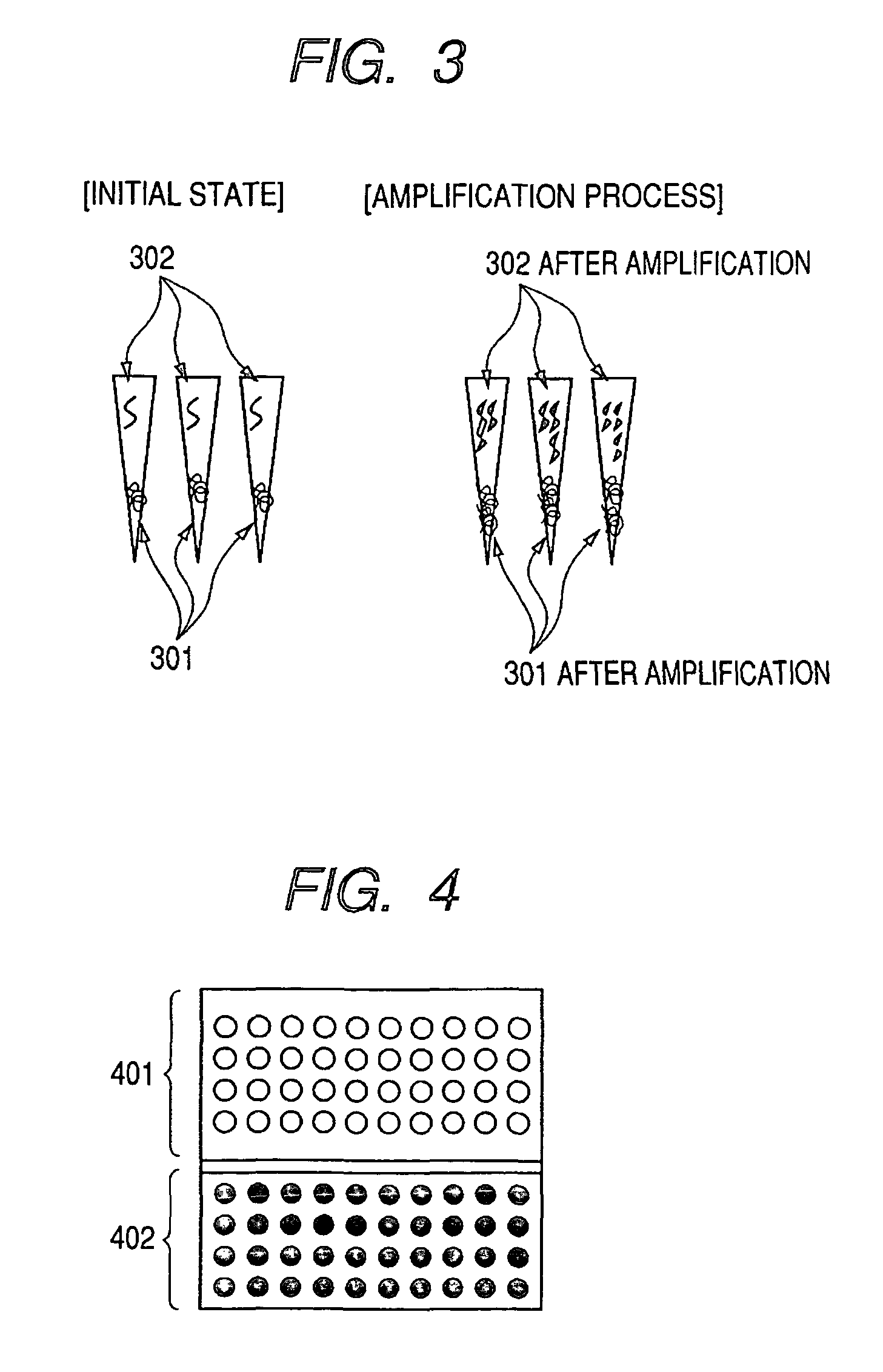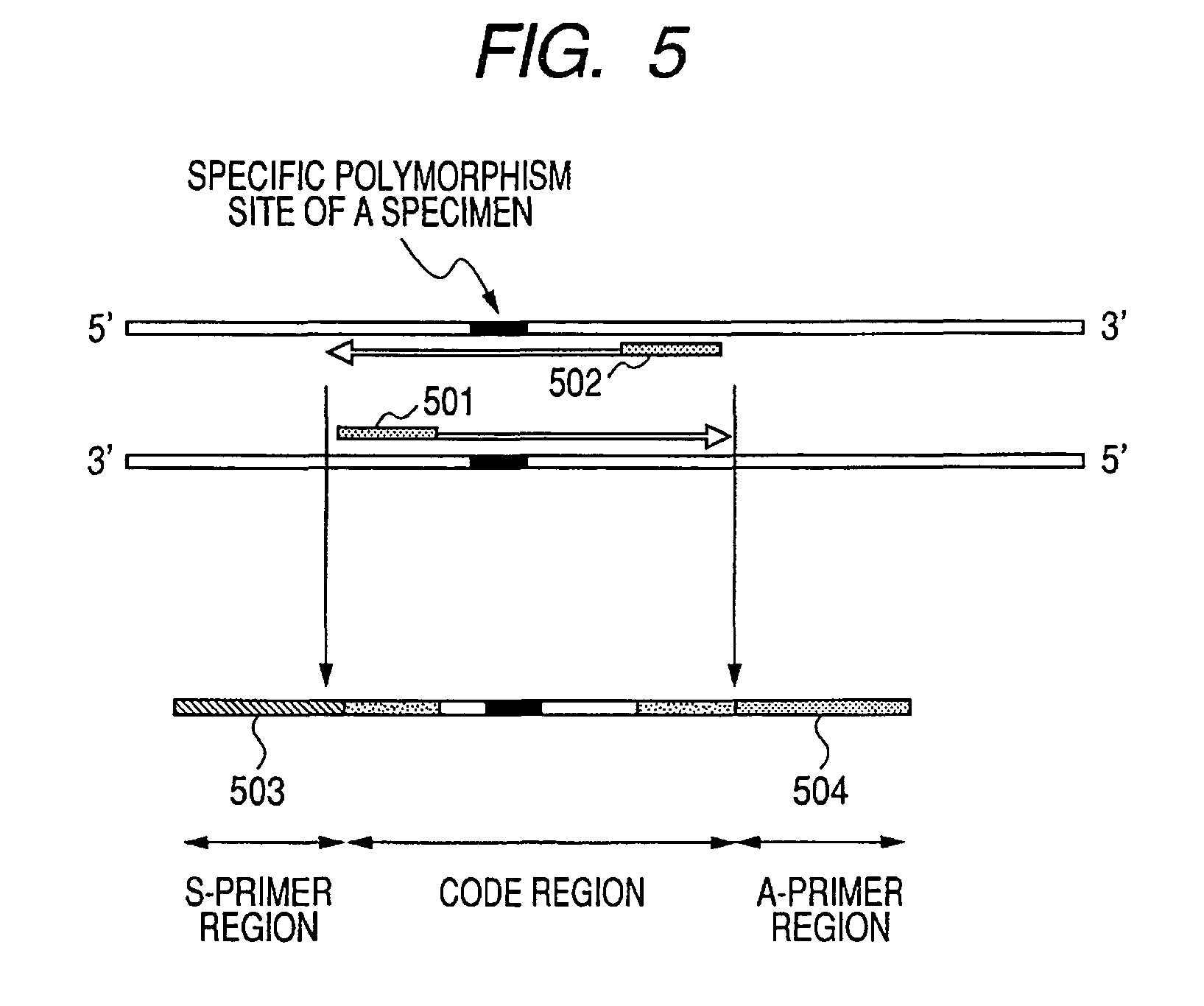Identifier and nucleic acid amplification method of verification using the same
a technology of nucleic acid and amplification method, which is applied in the field of identification and nucleic acid amplification method of verification using the same, can solve the problems of difficult to ensure the reliability of the test, difficult to manage, and confusion of the identification codes of the original specimen, so as to achieve the reliability of the data and be convenient to specify
- Summary
- Abstract
- Description
- Claims
- Application Information
AI Technical Summary
Benefits of technology
Problems solved by technology
Method used
Image
Examples
first embodiment
[0027]A first embodiment of the present invention is described below with reference to FIGS. 1, 2 and 3. The present embodiment relates to a design of an identifier having a base sequence into which an individual code to identify a specimen is recorded as a set of decodable information. The present embodiment also includes a specimen storing method which stores for management a specimen and an identifier in one and the same container, preferably, as a mixture.
[0028]The identifier has a base sequence incorporating as a set of decodable (translatable) information an individual code imparted for identification of a specimen. In other words, by decoding (translating) the base sequence, the individual code of the specimen can be obtained. The identifier has a base sequence defined beforehand in a unique manner in relation to the specimen, in such a way that the identifier is designed so as to be capable of being simultaneously amplified by using the same pair of primers as a pair of prim...
second embodiment
[0055]A second embodiment of the present invention is described below with reference to FIG. 5. The present embodiment relates to an identifier design carried out by extracting a base sequence unique (intrinsic) to a specimen and by adopting the base sequence as an individual code of the specimen.
[0056]Examples of the base sequence unique to a specimen include specific repeated sequences found in a genome such as a short tandem repeat and a minisatellite. The genome identification methods utilizing these sets of information as sample codes are well known in the art (Japanese Patent Application Laid-Open No. H06-205700). In the present embodiment, described is a designing of an identifier to be carried out by extracting a repeated region or a polymorphism region of a genome from a specimen, and by making the extracted region undergo ligation with a probe having the sequence corresponding to the amplification primers.
[0057]FIG. 5 schematically shows the process for synthesizing an ide...
PUM
| Property | Measurement | Unit |
|---|---|---|
| electrophoresis | aaaaa | aaaaa |
| time | aaaaa | aaaaa |
| structure | aaaaa | aaaaa |
Abstract
Description
Claims
Application Information
 Login to View More
Login to View More - R&D
- Intellectual Property
- Life Sciences
- Materials
- Tech Scout
- Unparalleled Data Quality
- Higher Quality Content
- 60% Fewer Hallucinations
Browse by: Latest US Patents, China's latest patents, Technical Efficacy Thesaurus, Application Domain, Technology Topic, Popular Technical Reports.
© 2025 PatSnap. All rights reserved.Legal|Privacy policy|Modern Slavery Act Transparency Statement|Sitemap|About US| Contact US: help@patsnap.com



